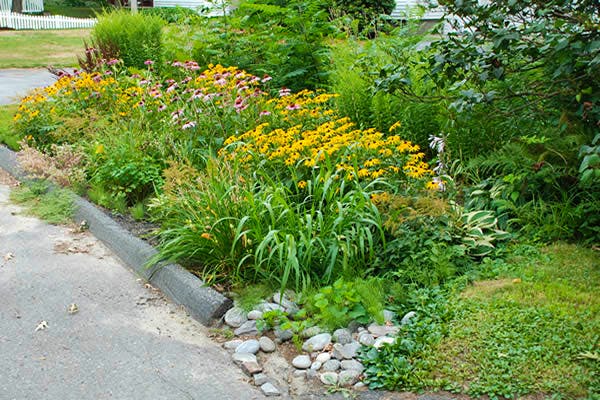2011 was a record setting year for extreme weather events that resulted in billions of dollars in damage. With heat waves and droughts in the south and flooding along the east coast and in the mid-west our nation was pummeled with extreme weather events over the course of the year.
Defenders is working with politicians and government agencies to help plan for more of the inevitable extreme weather we can expect from climate change. You can check out our recommendations in our latest report “Harnessing Nature.” But there are also some simple things you can do at home to help lessen the impact of these weather events. One example for people who live in highly urban areas is to plant a rain garden.
Cities and even the suburbs are covered in cement and other impermeable surfaces, either from paved roads, driveways, sidewalks and buildings or highly compacted soil. The result? Water from storms is unable to seep into the ground and results in immediate run-off into storm drains or nearby streams and rivers. Because so much water is falling during extreme weather storms this immediate run-off results in flash flooding across roadways and over stream banks. A rain garden is a useful addition to your home that gives the water coming off your roof and falling from the sky a place to seep into the ground instead of flowing directly into water-ways. In addition to helping filtrate out harmful pollutants, such as nitrogen and phosphorus, a rain garden will also provide natural habitat for your local wildlife. And they’re pretty too!
Learn more benefits of rain gardens and learn how to set up your own here:






Follow Defenders of Wildlife
facebook twitter instagram youtube tiktok threads